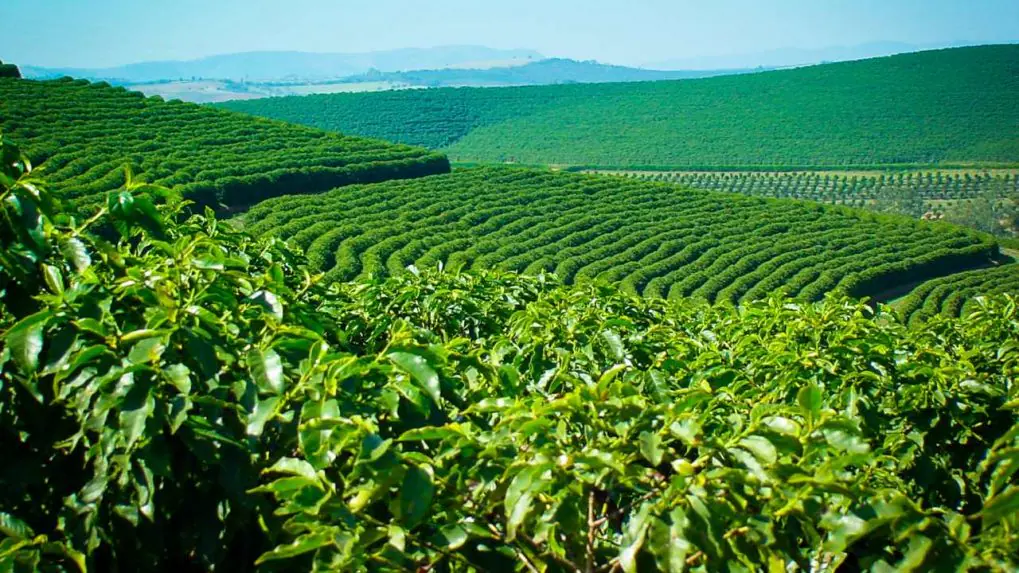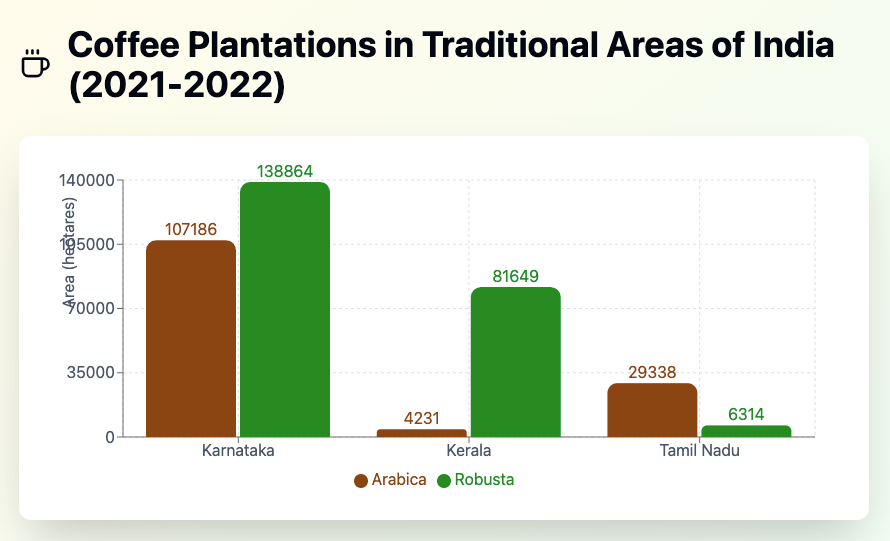A Journey Through India's Coffee Plantations: The Rise of Arabica and Robusta

India’s coffee industry has a rich history that dates back several decades, evolving through the diverse landscapes of the country. From the foothills of the Western Ghats to the far reaches of the Northeast, coffee plantations have flourished, making India a unique player in the global coffee market. Let's delve into the historical trends, current state of production, and what makes Indian coffee—particularly Arabica and Robusta—so special.
Historical Overview: Coffee Production in India
India's coffee cultivation dates back to the early 1950s, and it has grown exponentially since then. As of 1950-51, the total planted area for coffee in India was just over 92,000 hectares, with Arabica occupying 73% of this area and Robusta 27%. Fast forward to 2021-22, the planted area has expanded to 471,656 hectares, with the distribution between Arabica and Robusta becoming more balanced over time—51.5% Arabica and 48.5% Robusta

Regional Coffee Hubs: The Heart of India’s Coffee Production
India’s coffee-growing regions can be broadly classified into traditional and non-traditional areas, with the former being dominant.
- Karnataka: Known as India’s coffee heartland, Karnataka is responsible for over 52.2% of the country’s total coffee production. The state is particularly famous for its vast Robusta plantations, although Arabica is also grown here. In 2021-22, Karnataka contributed 107,186 hectares for Arabica and 138,864 hectares for Robusta.
- Kerala: Though less known compared to Karnataka, Kerala plays a significant role in Robusta cultivation. The state’s cool, humid climate is ideal for growing high-quality Robusta, and it accounts for 17.3% of the total planted area for Robusta.
- Tamil Nadu: Famous for its Nilgiri hills, Tamil Nadu is another major coffee-growing region, particularly known for its Arabica beans. In 2021-22, the state had 29,338 hectares of Arabica and a smaller portion dedicated to Robusta.
- Non-Traditional Areas: The expansion into non-traditional areas has also seen considerable growth, with 99,379 hectares under cultivation in these regions. These areas are instrumental in supporting the growing demand for Indian coffee both locally and internationally.

India’s coffee plantations continue to evolve, driven by advancements in farming techniques and the expansion into new, non-traditional areas. The balanced cultivation of both Arabica and Robusta ensures that Indian coffee caters to a diverse range of palates across the world. The country's coffee industry is poised to meet growing global demand while retaining its heritage and distinct flavor profiles.
Whether you prefer the mild, aromatic taste of Arabica or the bold, full-bodied strength of Robusta, Indian coffee offers something for everyone. As we sip our morning brew, it's worth remembering the long journey these beans have taken—from the hills of Karnataka, Kerala, and Tamil Nadu to our cups.
India's coffee story is one of perseverance, innovation, and deep-rooted tradition. With Arabica and Robusta beans grown across diverse regions, each with its own climatic advantages, the future of Indian coffee is bright. Whether you're a fan of smooth Arabica or prefer the intensity of Robusta, India has a coffee for you.
So next time you brew a cup of your favorite coffee, think about the rich history and the dedicated farmers who have nurtured these beans to perfection.
